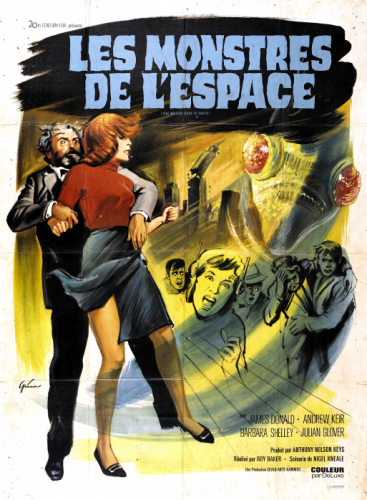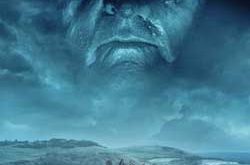SYNOPSIS:
“Workers excavating at an underground station in London uncover the skeletal remains of ancient apes with large skulls. Further digging reveals what is at first believed to be an unexploded German bomb from World War II. Missile expert Colonel Breen is brought in to investigate, accompanied by Professor Bernard Quatermass. When the interior of the ‘missile’ is exposed, a dead locust-like creature that resembles the devil is found. It is determined by Quatermass that these ‘locusts’ are evil Martians who altered the brains of our simian ancestors to eventually lay claim to the Earth. When Quatermass’s suspicion that the missile can reactivate the dormant evil in humans is confirmed, all hell breaks loose.” (courtesy IMDB)
REVIEW:
Every now and then you’ll find two very different motion pictures released almost simultaneously that deal with essentially the same subject. We encountered aliens in 1951 with The Thing From Another World (1951) and The Day The Earth Stood Still (1951), learned to love the bomb in 1964 with Fail-Safe (1964) and Doctor Strangelove (1964), and became suspicious of the manufactured world around us in 1999 with The Matrix (1999) and Dark City (1999). The year 1968 saw the release of two science fiction films whose stories were concerned the discovery of alien artifacts that lead to the realisation that mankind’s development has resulted from alien manipulation dating back millions of years into the past. One of these films was, of course, 2001: A Space Odyssey (1968), which remains one of the greatest science fiction films ever made, ageless alongside contenders like Star Wars: A New Hope (1977), Close Encounters Of The Third Kind (1977), and Blade Runner (1982).

The other was Hammer’s production of Quatermass And The Pit (1968), also known as Five Million Years To Earth, which was based on Nigel Kneale‘s 1958 BBC television serial, the third in the series involving rocket designer and all-around space expert Professor Bernard Quatermass. Though the film telescopes the original story, the plot basically follows that of the serial (the screenplay was also written by Kneale). It begins when the remains of an ape-man are discovered while a new underground railway station is being excavated under a London street called Hob’s Lane. An anthropologist (James Donald) and his assistant (Barbara Shelley) arrive on the scene and uncover more primitive remains, as well as a large cylindrical object which appears to made of metal and which is thought to be an unexploded German bomb. The army soon realise that it is more likely to be a German rocket, which brings in Professor Quatermass (Andrew Keir) and his military counterpart, the arrogant, narrow-minded Colonel Breen played by Julian Glover, possibly best recognised for his role as General Veers in Star Wars V: The Empire Strikes Back (1980).
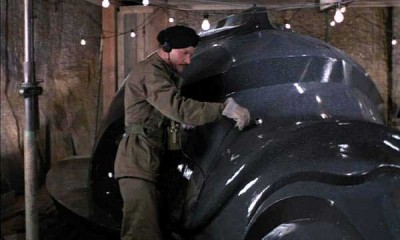
When the object is completely free of the surrounding clay, Quatermass has profound doubts as to whether it has anything to do with the Second World War, particularly when one of the strange five-million-year old skulls is found inside the object. To the amazement of Quatermass and the others, the object is also found to contain the bodies of several large insect-like creatures, which begin to putrefy rapidly as soon as the air reaches them. Quatermass believes them to be aliens from outer space but Colonel Breen maintains that they represent part of a Nazi propaganda campaign that never got properly under way.

Quatermass deduces that the creatures originated from Mars millions of years ago, when they realised their planet was dying they invaded Earth, but it was an invasion by proxy: Not being able themselves to live on Earth, they captured a number of primitive apes and altered their genetic structure turning them, mentally, into primitive Martians. The ape creatures were then let loose to breed with others of their species. The implications stun Quatermass as he realises that the human race didn’t evolve naturally but as a result of Martian interference. “Gentleman!” he cries, “We are the Martians!”

Despite Quatermass’s objections, Breen arranges for a television crew to film the object. But as soon as the power cables for the television equipment are laid through the pit and into the interior of the object there is an outbreak of psychic activity with objects flying in all directions. The area of activity rapidly increases and soon groups of people roam the streets in a sort of trance, hunting down people who don’t possess the ‘power’ and killing them with a barrage of telekinetically-propelled objects.
 Barricaded in a pub, Quatermass explains that the Martian strain in the human species remained dominant genetically. The Martians had programmed their altered creatures periodically to conduct a cull of the species in order to remove any human
Barricaded in a pub, Quatermass explains that the Martian strain in the human species remained dominant genetically. The Martians had programmed their altered creatures periodically to conduct a cull of the species in order to remove any human
mutations who might have been born without the Martian genes. Over the years this programming has faded, with the result that a great number of non-Martian humans had evolved naturally. However, the object in the pit, which is organic in nature, was not merely a space vehicle but was also designed to reinforce the programming. It had lain dormant for eons, except on occasions when seismic activity had slightly activated it and produced ghostly manifestations. Now that it had an enormous supply of energy it was fully activated and spreading its influence farther and farther afield.

The huge form of one of the Martians then appears, with its triangular face and horns it looks just like a devil. The anthropologist saves the day by mixing an old law of the supernatural (about a demon being unable to survive cold iron) with science. He sacrifices his life in swinging the steel boom of a crane round to penetrate the Martian shape, thus effectively grounding it and dispersing its energy. The second Martian invasion is over.
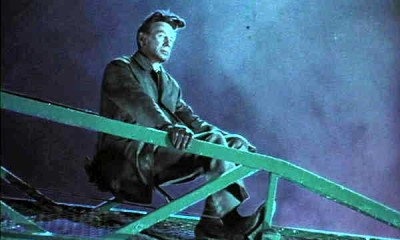
With his story, Nigel Kneale created one of the most ingenious alien invasion plots of all time, and in a nod to H.G. Wells’ Martians he gives his Martian insects three legs. As with most of his other work – The Quatermass sagas, The Stone Tape, and Halloween III: Season Of The Witch (1982) included. it is a cunning mixture of contemporary science and deep-rooted myths and superstitions that gives the work extra resonance. In Quatermass And The Pit, Kneale explores themes similar to those of science fiction author Arthur C. Clarke. The idea of the devil becoming implanted in the human racial memory as a result of contact with a horned alien species figured prominently in Clarke’s 1953 novel Childhood’s End, and the idea of an alien artifact being discovered on the moon was the subject of Clarke’s 1950 short story The Sentinel which, of course, provided the basis for Stanley Kubrick’s 2001: A Space Odyssey, and that finally brings this film review full-circle.
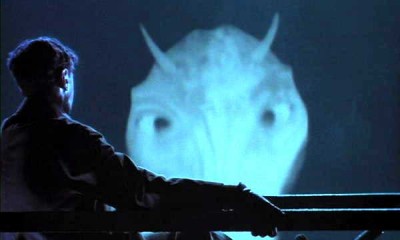
So please join me next week when I have the opportunity to present you with more unthinkable realities and unbelievable factoids of the darkest days of cinema, exposing the most daring shriek-and-shudder shock sensations to ever be found in the steaming cesspit known as…Horror News! Toodles!
Bonus Features
- NEW Audio Commentary With Film Historian Bruce G. Hallenbeck
- NEW Audio Commentary With Filmmaker Constantine Nasr And Author/Film Historian Steve Haberman
- NEW Interview With Actor Hugh Futcher
- NEW Interview With Academy Award-Winning Special Effects Artist Brian Johnson (Alien)
- NEW Interview With Clapper Loader Trevor Coop
- NEW Interview With Focus Puller Bob Jordan
- Interview With Author Judith Kerr
- Interview With Actor Julian Glover
- Interview With Actor/Writer Mark Gatiss
- Interview With Filmmaker Joe Dante
- Interview With Author/Film Historian Kim Newman
- Interview With author/Hammer Film Historian Marcus Hearn
- Audio Commentary With Director Roy Ward Baker And Writer Nigel Kneale
- World of Hammer – Sci-Fi
- Theatrical Trailers
- TV Spots
- Alternate U.S. Credits
- Still Gallery
Quatermass and the Pit is now available on bluray per Shout Factory
 Horror News | HNN Official Site | Horror Movies,Trailers, Reviews
Horror News | HNN Official Site | Horror Movies,Trailers, Reviews

